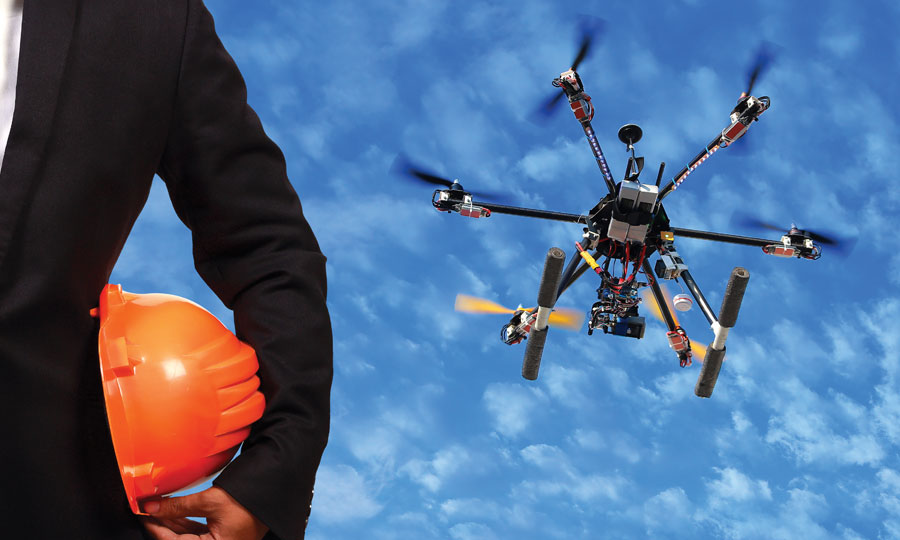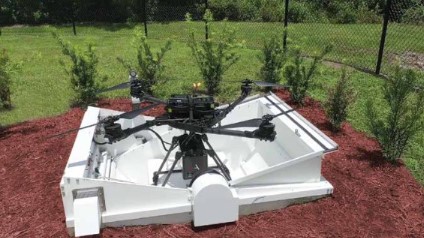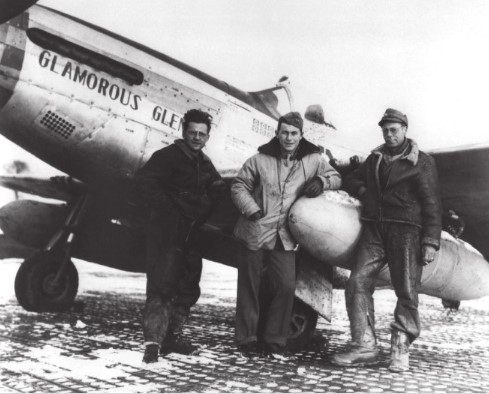Editor’s note: inspired by Patrick Sherman’s “Night Flight” feature in our October/November issue, Andrew offered his personal test questions that he created for his own FAA Daylight Operations Waiver. Answers are upside-down at the end!
ONE: What are some of the factors that increase the risk of UAS night operations compared to daylight operations?
1. UAS fly differently at night, making it difficult for pilots who are used to flying during the day.
2. A pilot’s visual acuity is reduced, and vision is his/her most important sense.
3. Visibility of the UAS, structures, and ground obstacles, as well as other aircraft, is reduced at night.
4. Pilots and crew members are more likely to be tired and less aware at night.
5. Visual illusions occur at night that can trick any pilot, despite excellent vision, unless the pilot is aware of the visual illusions and can counteract them.
A. 1, 2, 4, and 5.
B. 1, 2, 3, 4, and 5.
C. 3, 4, and 5.
D. 2, 3, 4, and 5.
TWO: According to Title 14 of the Code of Federal Regulations (14 CFR) part 1, Definitions and Abbreviations, night is defined as what?
A. The time between sunset and sunrise.
B. The time between the end of evening civil twilight and the beginning of morning civil twilight.
C. The time between sunrise and sunset.
D. The time between the end of evening aviation twilight and the beginning of morning aviation twilight.
THREE: A UAS can be flown after sunset or before sunrise without a daylight operations waiver under what conditions?
A. Only hobbyists can fly during civil twilight, not commercial operations per Part 107.
B. A UAS cannot be flown after sunset or before sunrise without a daylight operations waiver.
C. During civil twilight, half-hour periods directly before sunrise and after sunset, with anti-collision lighting visible for at least three statute miles mounted on the UAS.
D. Only if a NOTAM has been filed and the UAS is equipped with anti-collision lighting visible for 5 statute miles.
FOUR: Why should landing zones and alternate landing zones be clearly marked and lit for night operations?
A. Because you will lose your Remote PIC license if landing zones are not clearly lit.
B. Because it is far harder to visually identify landing zones at night; the landing zone blends into the surrounding area—especially if other areas are similarly lit.
C. Because it makes it easier for manned aircraft pilots to see and avoid your operation area.
D. Because the aircraft may hit an obstacle while performing an automated landing unless the landing zone is properly lit.
FIVE: What nighttime visual illusion is LEAST important for a Remote PIC to be aware of?
A. Size-distance illusion
B. Autokinesis
C. Reversible perspective illusion
D. False horizon
SIX: Which statement is true?
A. The cones, found in the center of the eye, see poorly at night and cause a partial blind spot at night.
B. The rods, found in the center of the eye, are what our eyes use to see at night, leaving a partial blind spot in the periphery of the eye.
C. The rods, found in the periphery of the eye, see poorly at night and cause a visual blind spot at night.
D. The cones, found in the center of the eye, are what our eyes use to see at night, leaving a partial blind spot in the periphery of the eye.
SEVEN: How much time does it take for the eye to become totally adjusted to the darkness, and how quickly can night-adjusted vision be lost when exposed to bright light?
A. It takes 5 minutes to reach peak night vision, and 5 minutes of exposure to bright light will reset it.
B. It takes 5 minutes to reach peak night vision, and a few seconds of exposure to bright light will reset it.
C. It takes half an hour to reach peak night vision, and 5 minutes of exposure to bright light will reset it.
D. It takes half an hour to reach peak night vision, and a few seconds of exposure to bright light will reset it.
EIGHT: Which statement is NOT an FAA recommendation to aid night vision?
A. Close one eye when exposed to bright light to help avoid the blinding effect.
B. Drink coffee or an energy drink to increase blood flow to the eyes.
C. Concentrate on seeing objects (look to one side of an object).
D. Force the eyes to view off-center using scanning techniques.
E. Blink the eyes if they become blurred.
NINE. Which of the following statements regarding visibility and operational limitations are true?
1. Weather visibility must be at least 3 statute miles.
2. The UAS must be a minimum of 500 feet below and 2,000 feet away horizontally from clouds.
3. A daylight operations waiver may be combined with another waiver without direct approval by the FAA. For example a waiver for flying over people that was obtained separately with no reference to daylight operations, to fly at night over people.
4. A visual observer is always required for night flights.
5. The UAS must be equipped with anti-collision lighting visible from all points of the compass from at least 3 statute miles away.
A. 1, 2, 4, and 5.
B. 1, 2, 3, and 4.
C. 3, 4, and 5.
D. 1, 2, and 5.
TEN. What is good nighttime scanning, and how is it different from daytime scanning?
A. There is no difference.
B. Nighttime scanning uses the same sweeping motion as daytime, but requires intentionally focusing on what you see in the off-center portion of your eyes because there is a blind spot in the center of the eye at night.
C. In daytime scanning, you scan from side to side; in nighttime scanning, you scan from the horizon line to directly above your head.
D. In daytime scanning, you scan from side to side; in nighttime scanning, you scan in a circular pattern while intentionally focusing on what you see outside the center of your vision.
ELEVEN: What is autokinesis?
A. Objects may incorrectly seem closer when brightly lit and farther away when dimly lit.
B. The pilot relies upon instrument readings which are frequently in error instead of what he can see, potentially leading to a crash.
C. Difficulty determining if an object is moving towards you or away from you.
D. When flying in the dark, a stationary light may appear to be moving if it is stared at for a prolonged period of time.
TWELVE: What is size-distance illusion (depth-perception illusion)?
A. The pilot’s vision becomes unfocused, and all perception of distance is lost.
B. Difficulty determining if an object is moving towards you or away from you.
C. Pilots may tend to fixate on a single point, making them less aware of other traffic.
D. Objects may incorrectly seem closer when brightly lit, and farther away when dimly lit.
THIRTEEN. What is fixation/fascination?
A. Objects may incorrectly seem closer when brightly lit, and farther away when dimly lit.
B. When the pilot is focused on the goal and uses the FPV monitor too much, increasing the risk of a crash.
C. Pilots may tend to fixate on a single point, such as the drone or the target, making them less aware of other air traffic or potential obstacles.
D. When flying in the dark, a stationary light may appear to move if it is stared at for a prolonged period of time.
FOURTEEN. What is reversible perspective illusion?
A. When flying in the dark, a stationary light may appear to move if it is stared at for a prolonged period of time.
B. Difficulty determining if an object is moving towards you or away from you.
C. Pilots may tend to fixate on a single point, making them less aware of other traffic.
D. When flying quickly at a constant altitude, the UAS appears to be gaining altitude when moving away from you and losing altitude when approaching.
FIFTEEN. True or False: Flicker vertigo is a flickering light that can be distracting, annoying, and disorienting, causing the pilot to lose focus. Being aware of how flickering/flashing lights affect you is critical before night flights.
A. True
B. False
SIXTEEN. What are effective methods of counteracting the effects of autokinesis?
1. Shifting your gaze frequently and using good scanning techniques to avoid prolonged fixation on light sources.
2. Viewing the UAS with a reference to stationary structures or landmarks.
3. Making eye, head, and body movements to eliminate the illusion.
4. Relying on telemetry data to prevent or resolve any perceptual conflict.
A. 1, 2, and 4.
B. 1, 2, and 3.
C. None of the above; they are for fixation.
D. All of the above.
SEVENTEEN. What is the key to overcoming fascination/fixation while conducting night operations?
A. Having a Visual Observer on site.
B. Good nighttime scanning technique and general situational awareness.
C. Relying on telemetry data to prevent or resolve any perceptual conflict.
D. Drinking coffee or an energy drink before beginning operations.
Answer Key:
1: D; 2: B; 3: C; 4: B; 5: D; 6: A; 7: D; 8: B; 9: A; 10: B; 11: D; 12: D; 13: C; 14: B; 15: A; 16: D; 17: B

About the Author
Andrew Keithly (@akeithlyphotography) is a commercial photographer and videographer in Tennessee who creates photos and videos for architects, realtors, and advertising. He started using drones soon after Part 107 was released and has found them to be an essential tool in his work.






